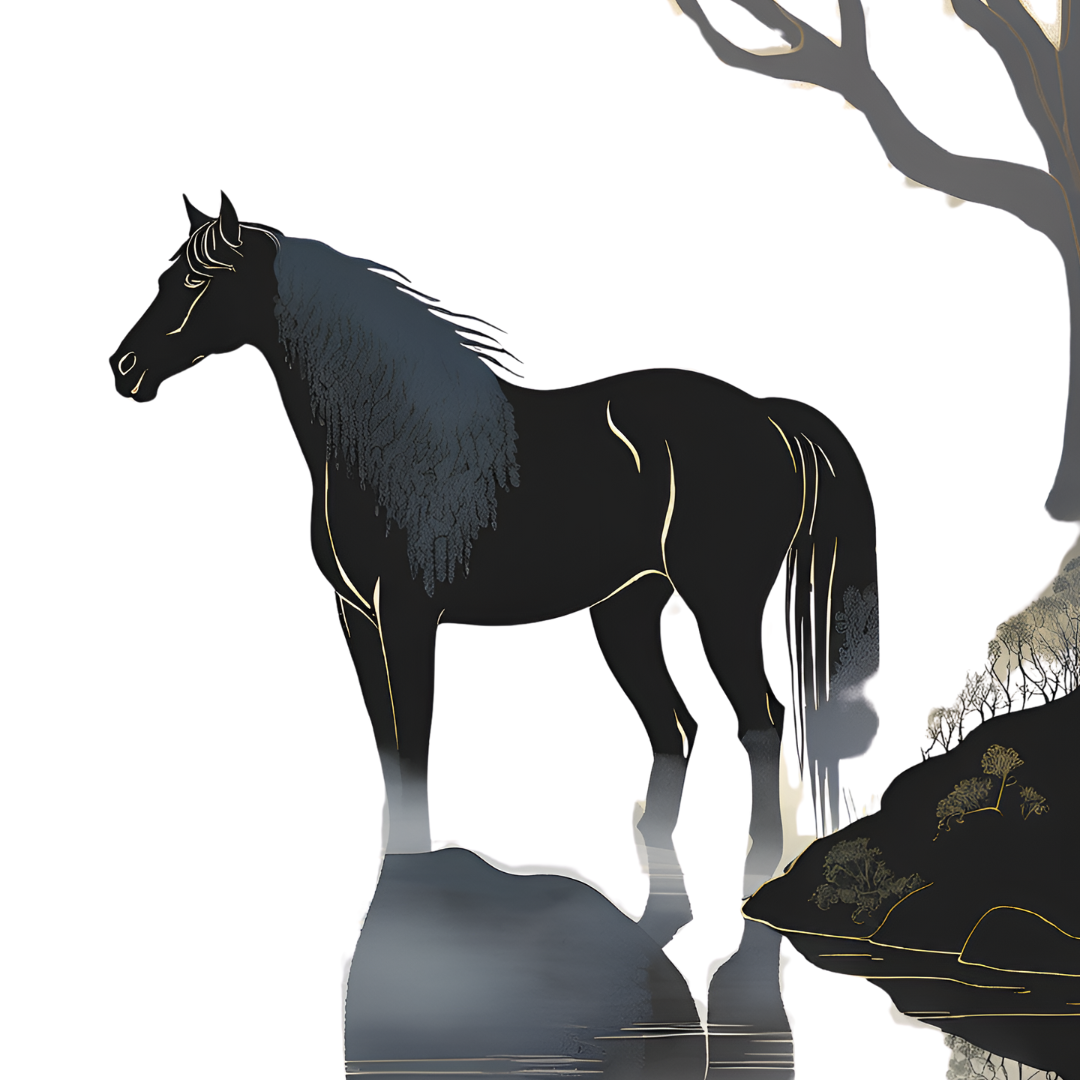The Kelpie is one of Scotland’s most well-known mythical creatures, feared for its ability to lure unsuspecting people, especially children, to their doom.
Key Features of the Kelpie:
- Shape-Shifting Ability: Kelpies are most commonly depicted as horses, but they have the magical ability to transform into humans. In some legends, they can also take on other forms. When appearing as a horse, the Kelpie is often described as a beautiful, strong black or white horse, standing near water to tempt people to ride it.
- Dangerous Nature: Although they can take on a benign appearance, Kelpies are dangerous creatures. If someone mounts a Kelpie in its horse form, they become magically stuck to it. The Kelpie then plunges into the water, dragging the rider down to their death. In some tales, they are said to devour their victims, leaving nothing behind but the liver.
- Human Form: In human shape, Kelpies are often described as attractive but with telltale signs of their true nature, such as wet hair, hooves instead of feet, or water weeds in their hair. Some versions of the legend suggest that Kelpies use their human form to lure people closer to water before revealing their true identity.
- Symbol of Nature’s Power: The Kelpie is often seen as a symbol of the unpredictable and sometimes treacherous nature of Scotland’s waters. With its ability to shape-shift and deceive, the Kelpie represents the dangers that lurk in the wild, untamed places of the land.
Famous Kelpie Legends:
- River and Loch Dwellers: Kelpies are said to inhabit most of Scotland’s bodies of water, but they are particularly associated with the River Spey and Loch Ness. Some tales even connect the Kelpie to the Loch Ness Monster, suggesting that the legend of the water spirit might have contributed to the Nessie myth.
- Overcoming the Kelpie: In some stories, brave individuals manage to overcome or capture a Kelpie by using its magical bridle, which can control the creature’s power. Once tamed, the Kelpie’s strength can be used for tasks like ploughing fields, but its temper remains dangerous.
The Kelpies in Modern Culture:
- The Kelpies Sculptures: Perhaps the most iconic modern representation of Kelpies is “The Kelpies,” a pair of 30-meter-high steel horse-head sculptures located near Falkirk, Scotland. Designed by artist Andy Scott, these magnificent statues celebrate the industrial heritage and horse-powered legacy of Scotland, though they draw inspiration from the mythical Kelpie. These sculptures have become a major tourist attraction, symbolizing the power and mystery of the Kelpie legend.
- In Art and Literature: The Kelpie continues to be a popular figure in Scottish folklore, often appearing in stories, books, and films that explore Scotland’s mystical heritage. The creature also features in modern fantasy literature, representing wild, magical forces of nature.
Kelpie Symbolism:
- Water and Transformation: Like many water spirits in folklore, Kelpies symbolize both the life-giving and destructive aspects of water. Their ability to shape-shift represents transformation and unpredictability, while their connection to water embodies the dangers of the natural world.
- Wary of Temptation: Many legends involving Kelpies warn of the dangers of temptation and trusting appearances. The creature’s ability to deceive by appearing beautiful reflects the idea that things are not always as they seem, a common theme in Scottish folklore.
The Kelpie is a fascinating part of Scotland’s rich mythological tradition, embodying both the awe and fear that the country’s natural landscapes evoke.


